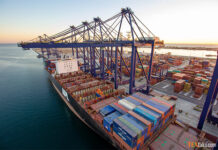
SINGAPORE: Oil prices rose more than 1 percent on Wednesday, extending gains from the previous session on signs that Washington and Beijing may soon resolve a trade dispute that has cast a pall over the global economy.
U.S. West Texas Intermediate (WTI) crude oil futures were at $50.53 per barrel at 0459, up 75 cents, or 1.5 percent, from their last settlement. That marked the first time this year that WTI has topped $50 a barrel.
International Brent crude futures were up 79 cents, or 1.3 percent, at $59.47 per barrel.
Both crude price benchmarks had already gained more than 2 percent in the previous session.
The oil price jumps were in line with Asian stock markets, which climbed to 3-1/2-week highs on Wednesday.
Trade talks in Beijing between the world’s two biggest economies entered the third day on Wednesday, amid signs of progress on issues including purchases of U.S. farm and energy commodities and increased U.S. access to China’s markets.
State newspaper China Daily said on Wednesday that Beijing is keen to put an end to its trade dispute with the United States, but that it will not make any “unreasonable concessions” and that any agreement must involve compromise on both sides.
If no deal is reached by March 2, Trump has said he will proceed with raising tariffs to 25 percent from 10 percent on $200 billion worth of Chinese imports at a time when China’s economy is slowing significantly.
Citing the trade tensions, the World Bank expects global economic growth to slow to 2.9 percent in 2019 from 3 percent in 2018.
“At the beginning of 2018 the global economy was firing on all cylinders, but it lost speed during the year and the ride could get even bumpier in the year ahead,” World Bank Chief Executive Officer Kristalina Georgieva said in a semi-annual report released late on Tuesday.
More fundamentally, however, oil prices have been receiving support from supply cuts started at the end of 2018 by a group of producers around the Organization of the Petroleum Exporting Countries (OPEC) as well as non-OPEC member Russia.






















